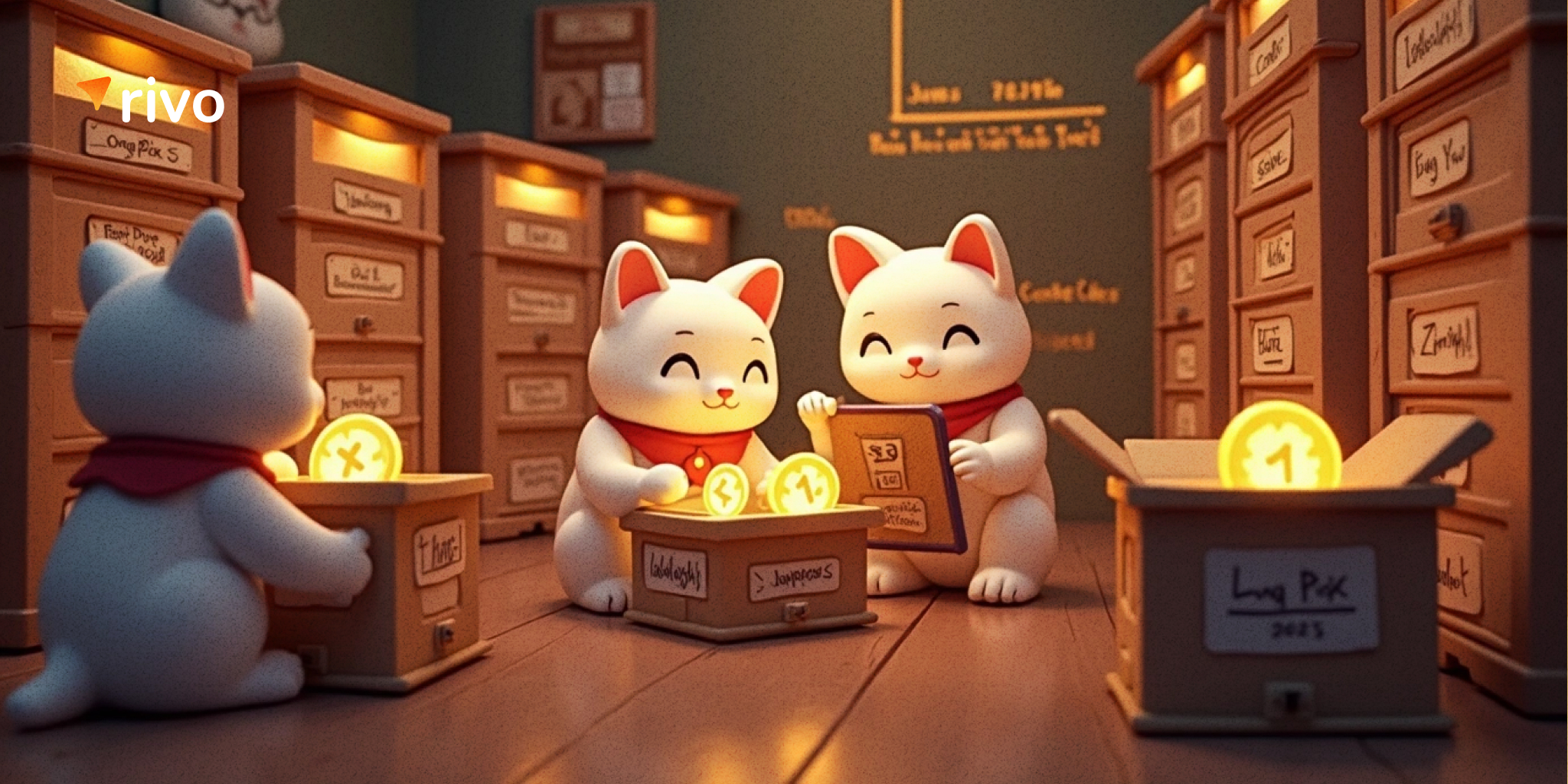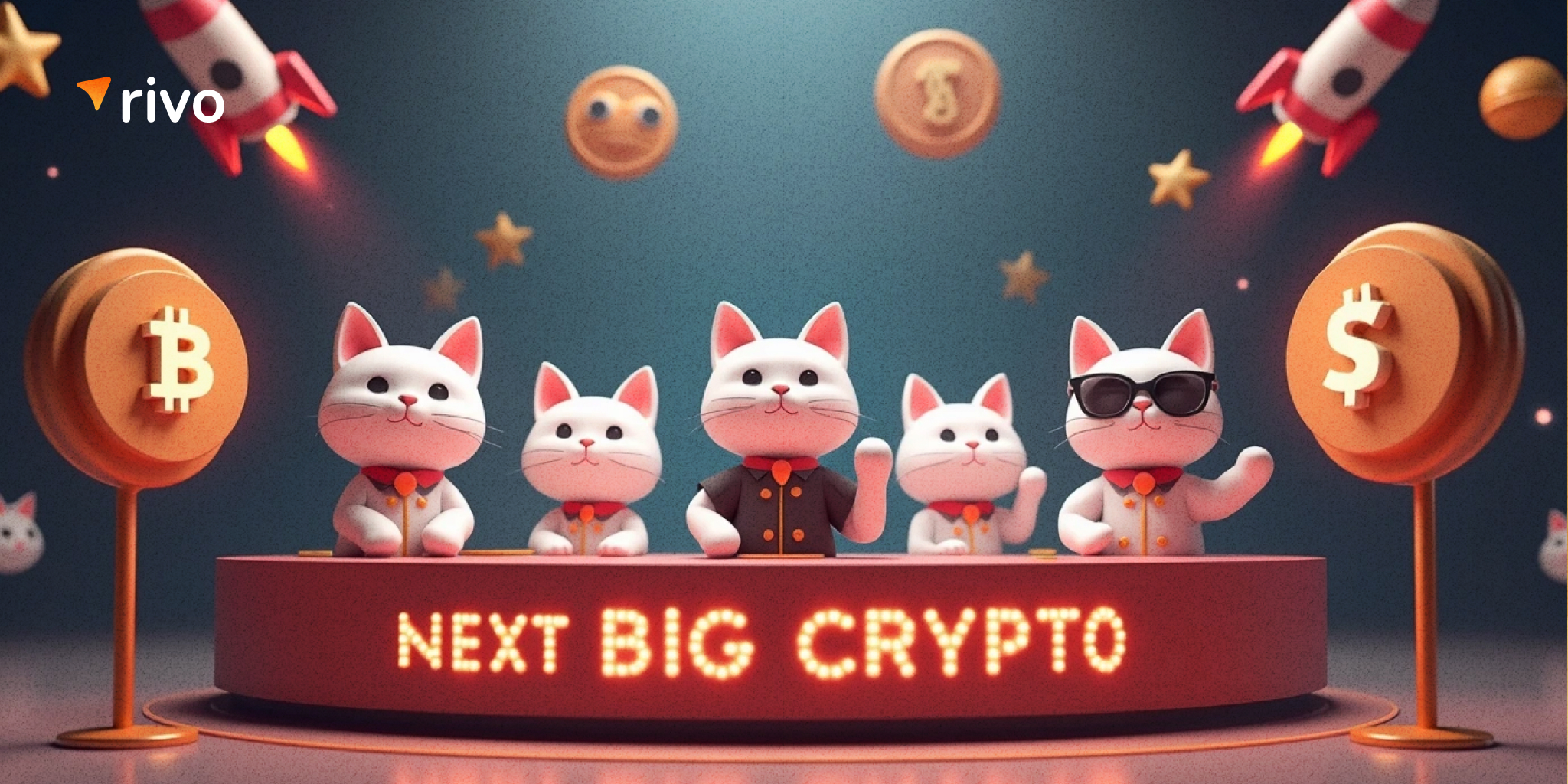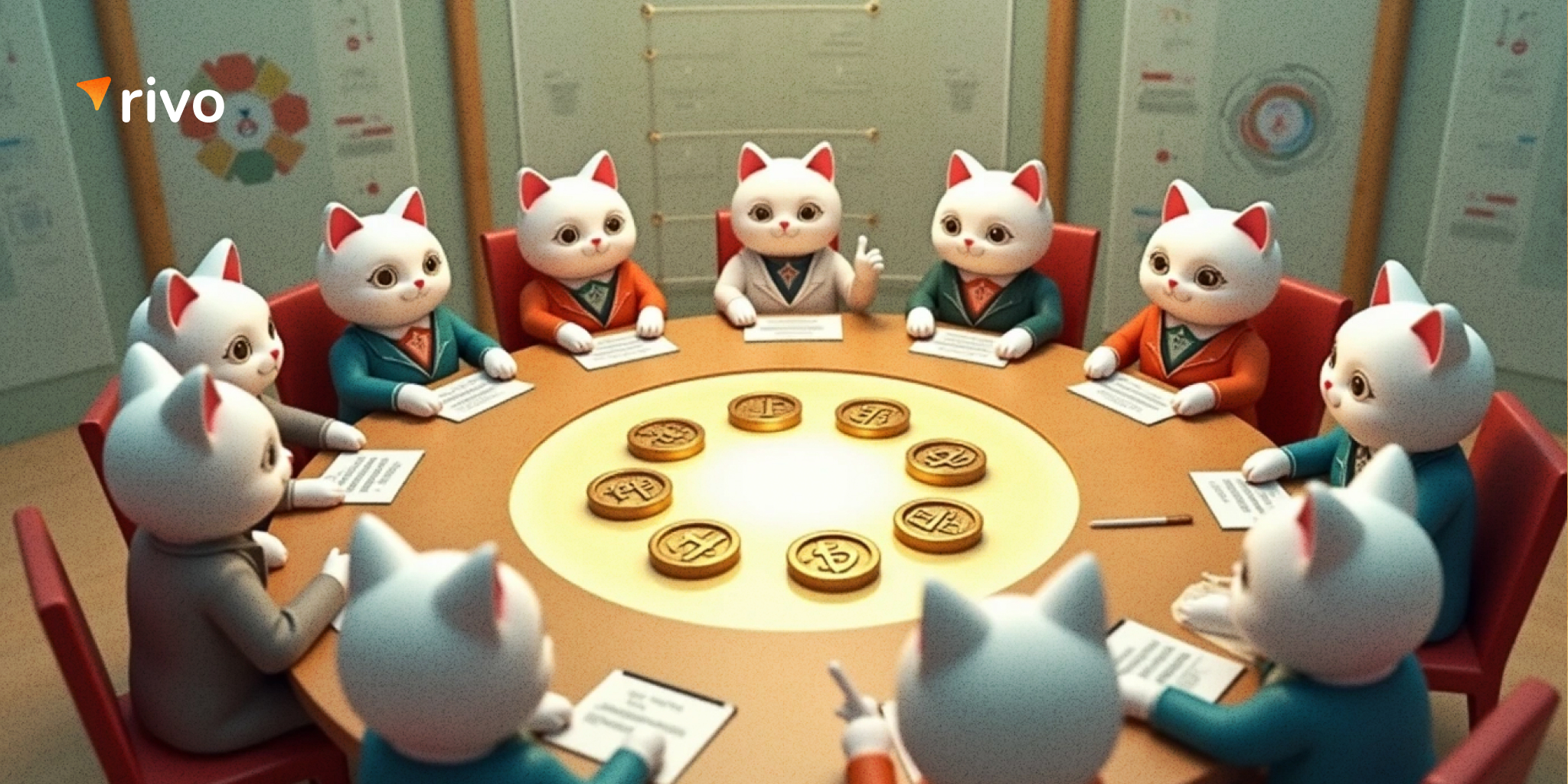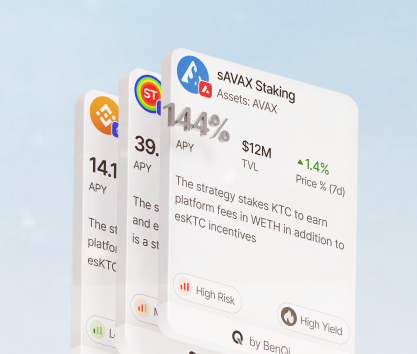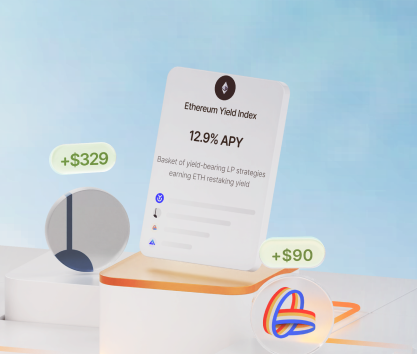Those who join the crypto market should be ready to use as many advanced investment tools as possible to achieve consistent returns. Relying on a single strategy while trying to earn money in this sophisticated financial sector seems to be an inadequate approach that rarely produces satisfying results. Retail trading looks like the best option for newcomers, but a variety of DeFi (decentralized finance) protocols offer a diverse lineup of money-making opportunities for everyone.
Investors without any prior experience often miss out on excellent investment avenues or lose their savings. According to a survey conducted by Preply, over 60% of cryptocurrency investors do not understand decentralization and blockchain technology. The overlap between the uninformed and those who lose money is statistically quite high. We want to help you learn more about the DeFi sector and its many protocols.
Contemporary centralized institutions like investment banks, stock exchanges, CEX companies, and brokerage service providers offer a convenient way of engaging with financial instruments. They have functional UIs and strong customer support run by experts in their fields. They appear trustworthy and reliable. The problem is that they are often not.
Since all centralized entities take your funds into custody, you have to have faith in their integrity and safety. One of the most prominent examples of centralization going wrong is the infamous 2013 Forex Scandal when it was revealed that multiple brokers, banks, and other financial institutions colluded to manipulate the market.
The cryptocurrency industry allows participants to work with exchange platforms that do not need to hold user funds. Self-custody is the biggest advantage of trading using decentralized finance instruments. Some benefits of centralization had to be abandoned:
- The overall user experience. Centralized companies have more resources and can simplify many processes to streamline navigation and make controls convenient for investors. Many DeFi platforms are lacking in terms of UI and accessibility.
- Slower order execution. Despite the best efforts from various protocols, the speed of processing market operations is still noticeably lower compared to what many CEXs and brokers are capable of. Since many transactions have to be settled on a blockchain, it can take some time for a trade to occur.
- Liquidity can be an issue. Automatic market makers are quite good at producing the necessary volume of operations to keep things running smoothly, but centralized exchanges are still better in this regard and offer reliable execution.
- No one to take the blame. Decentralization is an excellent tool that offers a wide range of advantages to end users. The problem is that many founders and developers are anonymous which is an issue in an emerging field without strict regulation and oversight.
Despite these issues, the growing popularity of DEXs indicates that people are strongly interested in self-custody and independent finance governed democratically. By the end of 2022, over 6.5 million people were using DeFi services. While this number is roughly 10% lower compared to 2021, the overall trend is positive as the hype settles down and only actual users remain active.
Modern retail traders and investors have access to a rich variety of different decentralized financial instruments that have matured over the last decade. Protocols, depending on their core functionality and purpose, give users ways to earn crypto passively, participate in governance, directly trade with other market participants, and more.
Some benefits of DeFi trading include:
- Trustless and fully transparent transactions. Blockchain technology allows all records to be easily accessible by the public while ensuring that the data is secure and immutable. As of the time of writing, the combined TVL on all chains was close to $85 billion excluding staking and governance tokens. Despite the falloff, it is still a large number indicating a high level of trust from investors.
- Lower investment costs. It is quite “normal” for centralized institutions to charge anywhere from 1% to 3% for each trade due to corporate overheads and, let’s be honest, greediness. Many decentralized exchanges have fees lower than 0.3% making them at least 10 times cheaper compared to commercial brokers and CEXs.
- Yield farming and other innovative products. Things like liquidity mining or staking simply do not exist outside the DeFi ecosystem. Tradfi has nothing to offer that would provide a similar experience to crypto investors interested in auto compounding, high yields, and direct participation. Some protocols offer APRs up to 20%. The average APR for high-yield accounts in US banks is about 5%.
- You own the assets! Self-custody is a big part of DeFi. It allows investors to stay in control over their finances, keep private keys away from curious eyes, and easily move around funds without relying on any centralized institution. According to a survey conducted by Coinbase, over 70% of all investors prefer self-custody for at least some of their holdings.
- Trade internationally without any issues. While fiat currencies and many securities require workarounds and specialized frameworks to be traded across borders, crypto digital assets are available everywhere. Uniswap reached a significant milestone in 2023 by processing over $1 trillion in cumulative volume serving users from all over the globe.
The current rapid development of the sector and the maturation of existing services should not be discounted. Some fluctuations in user counts and TVL are expected and may instill doubt even in the most dedicated supporter of the crypto industry. However, future trends in DeFi trading may bring something new to the table or significantly improve already impressive financial products.
Let’s talk about some numbers to think about if you are interested in decentralized finance. Monthly trading volumes have been averaging $177.5 billion in the first half of 2024. The average 30-day yield from the top five biggest pools (LIDO, Ether.fi, Rocket Pool, MakerDAO, and Binance Staked ETH) during the same period is 3.88% with MakerDAO reaching 7.17% in the middle of 2024. These are healthy numbers even if they are not as impressive as some enthusiasts would like them to be.
The crypto industry has produced several great projects that spearhead the development of the sector and create a strong foundation upon which a much bigger ecosystem can be built. We will discuss a couple of excellent cases that illustrate this point perfectly.
MakerDAO
This protocol appeared on the stage back in 2014 created by Rune Christensen and some of his friends. Initially, it was just a concept that turned into a functional Ethereum Dapp only in 2017 and made a good impression on investors as the first true stablecoin that managed to stick to the US dollar quite well despite ETH price fluctuations.
The protocol is governed by the public through its DAO and funded by the Maker Foundation headquartered in Copenhagen. In 2020, Bloomberg cited $DAI, the protocol’s native token, as the best cryptocurrency in terms of adoption.
As of the time of writing, TVL was close to $4.8 billion and the $DAI’s market cap was close to $1.67 billion. Both metrics have decreased notably since the beginning of the year. Nevertheless, high trading volumes (over $110 million daily) and growing liquidity give a good impression.
Uniswap — secure trading in DeFi ecosystems
As the biggest DEX platform in the world by all metrics, Uniswap is an excellent example of a decentralized project done right. Instead of employing traditional market makers, it uses liquidity pools and fully automatic MMs. Modern investors see this particular setup as nothing special, but it was a significant change of pace back in 2018 when it was first launched.
The third iteration of the source code has been used to build exchanges for different blockchains including Ethereum, Arbitrum, Polygon, and many others. It is one of the most reliable DEXs in the industry thanks to regular audits and the open-source nature of the development process.
In August 2024, Uniswap V3 Ethereum processed roughly $540 million daily controlling over 13% of the total trading volume. Other forks were also quite productive with 5 different DEXs from this family routinely cracking the Top 20 ranking by daily trading volume.
Several factors should be considered when picking the right trading Dapp. According to a survey conducted by CoinGecko, brand recognition of DeFi protocols is very high among investors yet usage is low. Over 60% of all crypto users have heard about Uniswap or Bancor, yet less than 10% of the respondents said that they have traded on these platforms.
It means that there is still a lot to learn for a retail trader with limited exposure to the DeFi ecosystem. Picking a reliable platform will be easier if you know what to look for.
- User experience and interface. Many contemporary DeFi projects have invested in the development of good Dapps that have intuitive navigation and easy-to-read dashboards. Select applications that you can effortlessly understand and start investing with.
- Multi-chain support. Any contemporary retail investor needs to focus on platforms that can, quite literally, bridge gaps between blockchains. Having access to a wide range of digital assets is beneficial for all traders.
- Trading volumes and liquidity. Take a close look at treasuries and available liquidity. Daily volumes also paint a good picture of the platform’s popularity, functionality, and performance. Avoid DEXs with below-average key metrics.
- Listen to the people. Join dedicated communities on Discord, Reddit, and other social media platforms to hear the praises and grievances of investors using DeFi tools directly. You will learn a lot by simply talking to other users.
Looking at other parameters and factors can be beneficial too. For example, if you use a specific wallet, you should look into platforms that are easily compatible with it. Metamask is supported by all DeFi protocols deployed on the Ethereum network, but other solutions may not be as universal.
With CoinGecko tracking 51 DEXs and Alchemy having 151 such Dapps on its list, picking something without many trials and errors seems impossible. Indeed, dodging mistakes should not be your goal, but it is a good idea to have a framework allowing you to identify good choices.
We propose using the step-by-step guide below:
- Select DEXs with high daily trading volumes and liquidity listed on CoinGecko, DeFiLama, etc.
- Carefully read through their technical documentation to learn whether they will work for you.
- Check if the selected platforms work with your preferred digital and hardware wallets.
- Join relevant communities on social media to learn more about nuances and specific features.
- Calculate potential profits using calculators and on-chain data analyzers. Consider fees.
- Pick projects that seem to align with your preferences, risk tolerance, and profitability goals.
Trading on DeFi platforms can be highly effective and bring incredible profits if you find the right place to conduct your in-market activities while using a good analytical system based on fundamental and technical analysis.
It can be a good idea to consider other features such as compatibility with third-party providers offering valuable instruments like portfolio tracking, AI-assisted asset management, automation, and more. Do not make decisions without conducting thorough research on the whole sector.
Determining the best in the industry can be quite challenging since many protocols offer very similar services, security features, and multi-chain capabilities. Popularity and performance can be good metrics. We want to give you a very short list of interesting platforms that appear to be excellent choices compared to the industry’s average.
- Uniswap. This particular project is a great destination for investors interested in trading a variety of tokens on multiple blockchains. The main fork Uniswap V3 Ethereum supports all ERC-20 tokens. The same can be said about V2. Bridges allow for interchain communication and quick transactions between Ethereum, Arbitrum, Polygon, and other networks. The $UNI token has an over $3.2 billion market cap and sizeable daily trading volumes.
- Kyber Network. KyberSwap is a feature-packed decentralized exchange that has direct access to Kyber Network acting as a liquidity hub aggregating it from multiple sources. The original DEX was deployed on Polygon, but the main fork is currently on Ethereum. Trading volumes are quite low (usually, below $50K), but if you are looking for a Dapp with great user experience and flexible functionality, Kyber is an excellent choice. The native token $KNC has an over $82 million market cap.
- ORCA. Deployed on Solana, this DEX is a great destination for people who want to engage with this particular network while having an option to quickly move their funds elsewhere. Orca is a solid project integrated with Jupiter, Kamino, and SolScan among many others. The platform regularly reaches a respectable $350 million 24-hour trading volume. It is the second biggest decentralized exchange after Uniswap. The $ORCA token has a solid $120 million market cap.
The whole crypto industry experiences fluctuations in user counts, prices, market capitalization, volatility, and many other metrics. Simultaneously, it persists through all the highs and lows. Decentralized platforms offer an alternative to outdated centralized monetary systems and promise financial freedom and independence to people regardless of their background, culture, or ethnicity. The democratization of finance alone will keep DeFi running indefinitely.
This year has not been kind to the DeFi sector with user counts dropping and TVLs contracting together with the falling prices. We have experienced this before. It is a cooldown period. We cannot promise that you will make money on any investment in this part of the crypto market. However, we are certain that some investments will pay off dearly!




